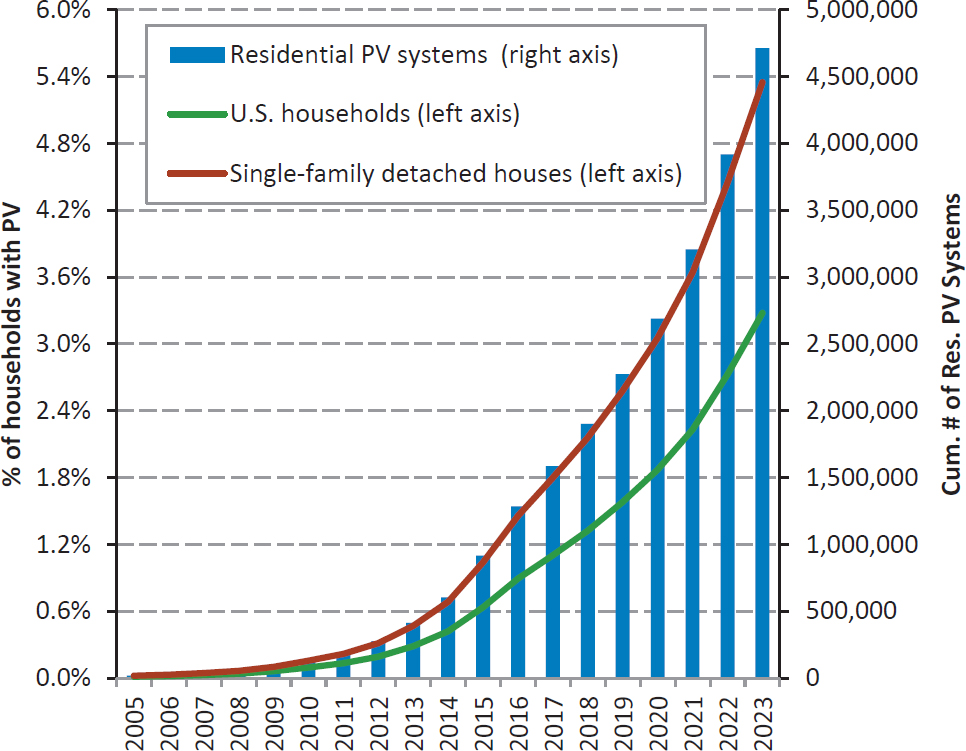Electricity System Operability and Reliability Under Increasing Complexity: Proceedings of a Workshop (2025)
Chapter: 1 Introduction
1
Introduction
The U.S. electricity system, known collectively as “the grid,” is increasingly integrating a complex array of distributed energy resources (DERs) such as solar panels, wind turbines, batteries, and small-scale energy generators. By harnessing a diverse range of power sources and often generating energy close to the point of use rather than only in central power plants, DERs offer unprecedented flexibility in electricity generation and management. However, the imperative to maintain and improve the operational integrity of the grid as it takes on increasing quantities of DERs represents an emerging critical issue and challenge, particularly as demand for electricity enters a period of significant growth in many places across the United States.
To consider the research needs, operational standards, regulatory approaches, market incentives, and other facets relevant to ensuring the operational integrity of the grid as it integrates complex distributed elements, the National Academies of Sciences, Engineering, and Medicine convened a workshop on Electricity System Operability and Reliability under Increasing Complexity in Washington, DC, on June 17–18, 2024. The event was sponsored by the Department of Energy, the Edison Electric Institute, and the Electric Power Research Institute. Building on several recent consensus studies and workshops addressing DERs and grid reliability overseen by the National Academies’ Board on Energy and Environmental Systems, the workshop convened representatives from government, industry, academia, and nongovernmental organizations to forge relationships and open communication channels to support
collaborative efforts toward building a more robust and flexible electricity system.
Over the course of 2 days of presentations, panel discussions, and breakout group discussions, participants examined a variety of challenges that grid operators face in maintaining reliable and equitable electricity service, along with emerging technologies and capabilities that may impact grid operations and reliability. Speakers and attendees discussed the current state and future evolution of DERs and behind-the-meter technology integration, considered relevant attributes of the key technologies, and examined their interaction with the grid at both the distribution and bulk power system levels. This proceedings summarizes the workshop presentations and discussions based on transcripts and recordings from the event and does not represent the views of the National Academies.
Workshop Planning Committee Chair Anuradha M. Annaswamy, senior research scientist, Massachusetts Institute of Technology, set the stage for the workshop with a brief review of the evolution and role of DERs in the United States over the past several decades. The incorporation of DERs into the grid started to gain steam in the early 2000s, with the expectation of future growth. Today, grid operators are seeing that expectation become reality, with steep increases in distributed capacity particularly over the past decade (Figure 1-1). However, the growth of DERs has varied widely by state, as have attempts to adjust planning paradigms and business models in response (Figure 1-2). States have become laboratories for incubating innovations like renewable standards, customer credit for excess energy, and energy equity policies. The technologies, operational paradigms, and policies being developed in this space have enormous implications for grid operability, reliability, and affordability, as well as our ability to meet the challenges posed by the climate crisis. Annaswamy tied these themes together as pieces of a puzzle: with markets connecting with consumers, which then connect with considerations of equity, regulation, and technology.
The workshop examined how the rapid expansion of DERs may affect grid operators’ ability to maintain reliable and equitable electricity service and what consequences—positive and negative—may result from a more complex, distributed grid that is simultaneously incorporating more renewable and net-zero energy sources. Participants identified capabilities and technologies that operators may need to improve system operations during normal conditions, as well as during extreme events, which are increasing in frequency and intensity. They considered opportunities to address evolving challenges on the transmission or bulk power side, and also discussed how new technologies and capabilities within the distribution system can improve system visibility and operations. Across all of

SOURCE: Feldman et al. (2024).
these facets, participants also examined considerations regarding energy equity and affordability, risk management, market valuations and incentives, policy and regulatory frameworks, and the role of consumers.

SOURCE: Interstate Renewable Energy Council (2024).



